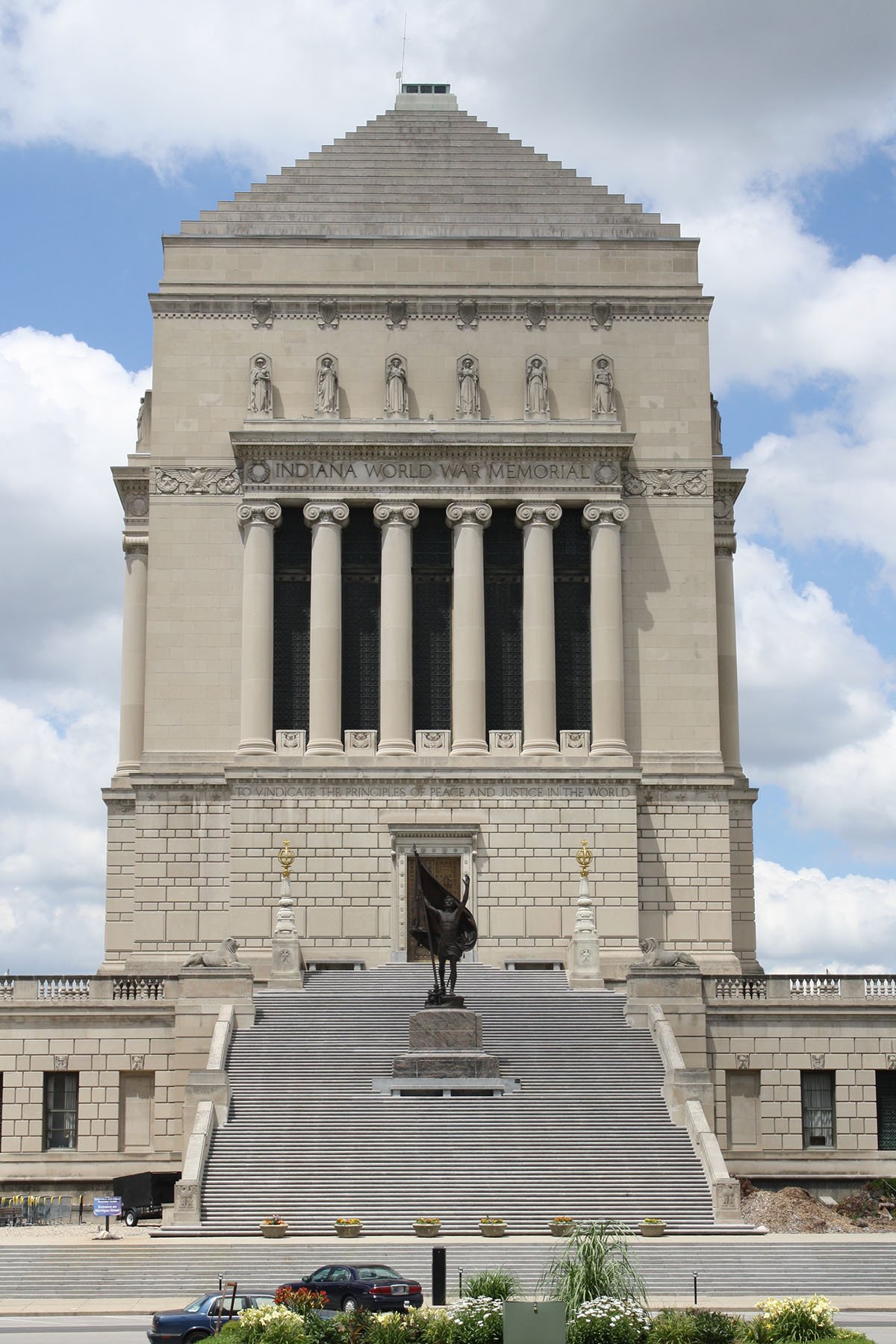Ninety years ago this month, three Indianapolis veterans of World War I led a successful campaign to persuade the first national convention of the American Legion to locate its national headquarters in Indiana’s capital. The Legion had been created in the spring of 1919 by American veterans in Paris as an organization for men and women of the Armed Forces who had fought for democratic ideals in Europe. With the enthusiastic aid of Indianapolis civic and business leaders, dentist T. Victor Keene, attorney Walter Myers, Jr. and Col. Robert Moorhead raised funds and made an all-out effort at the convention. Indianapolis triumphed over Minneapolis, Washington, D.C., New York City, Kansas City, and Detroit. Part of the promises made by the Hoosiers was that Indiana would build a headquarters for the Legion and an imposing memorial to the sacrifices of Hoosier veterans in the war.
In 1920, Governor James Goodrich called a special session of the General Assembly to authorize the state to build a national headquarters and war memorial, and the legislature voted to build both. A site was selected between the new Indianapolis Public Library on St. Clair Street on the north and the U.S. Courthouse and Post Office on New York Street to the south. Hoosier pride soon expanded the original conception of a combined headquarters and memorial building into a monumental shrine structure as the focal point of the five blocks, supplemented by a Legion building at the north end. In 1923 a jury of three nationally respected architects selected the design of Cleveland architects Walker and Weeks after a national competition. The winning design called for a gigantic memorial building between Vermont Street modeled on the Tomb of Mausolus at Halicarnassus, one of the 7 Wonders of the Ancient World. To the north would be an Obelisk Square and a two-block long landscaped mall leading to a Cenotaph, or symbolic tomb to the veterans of the war who had sacrificed their lives. On Independence Day in 1927, General John J. Pershing, commander of the American forces in France during World War I, laid the cornerstone of the Memorial Shrine Building.
By the time the interior of the Shrine was finished in 1937, the people of the state, the City of Indianapolis, and Marion County had spent approximately $12 million constructing the five-block long plaza. An equivalent value today could exceed a billion dollars. Newspaper accounts called it the largest war memorial in the world. The focal point then and now is the magnificent Shrine Room at the top of the Memorial Building. Rising nearly 100 feet, with a pyramidal ceiling containing hundreds of blue lights sparkling like stars, the room contains at its center an Altar of Consecration, dedicated to good citizenship and patriotism, above which hangs an immense American flag. Over the flag hangs a Star of Destiny, shining light and symbolizing guidance for the nation’s welfare. A sculptural frieze around the room shows allegorical scenes of American soldiers participating in World War I and in peace.
After World War II, the American Legion admitted to its membership veterans of the second world-wide struggle for democracy. The World War Memorial Plaza evolved to become a tribute to the valor and sacrifice of veterans of all wars since. In 1996, memorials to the veterans of World War II, the Korean War, and the Vietnam War were constructed in the American Legion Mall, designed by Indianapolis architect Patrick Brunner.
General Stewart Goodwin, Executive Director of the Indiana War Memorial Commission, states “It is very appropriate that Indiana would have built such a magnificent memorial to her Veterans.” Hoosiers traditionally have contributed men and women to the armed forces in higher numbers proportionately than most other states. He notes that the memorial’s mission today is to educate the public about the contributions of American veterans. A museum in the Memorial tells the story of Indiana’s participation in wars of the past, and the building is opened to as many veteran and civic events as possible.

War Memorial Building, 2013. James Glass
